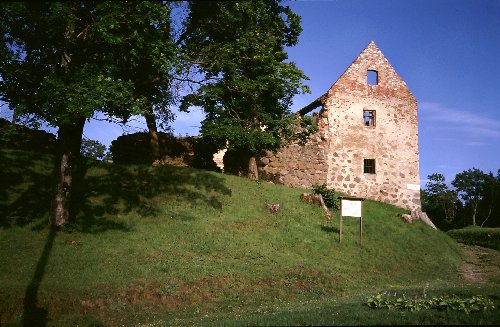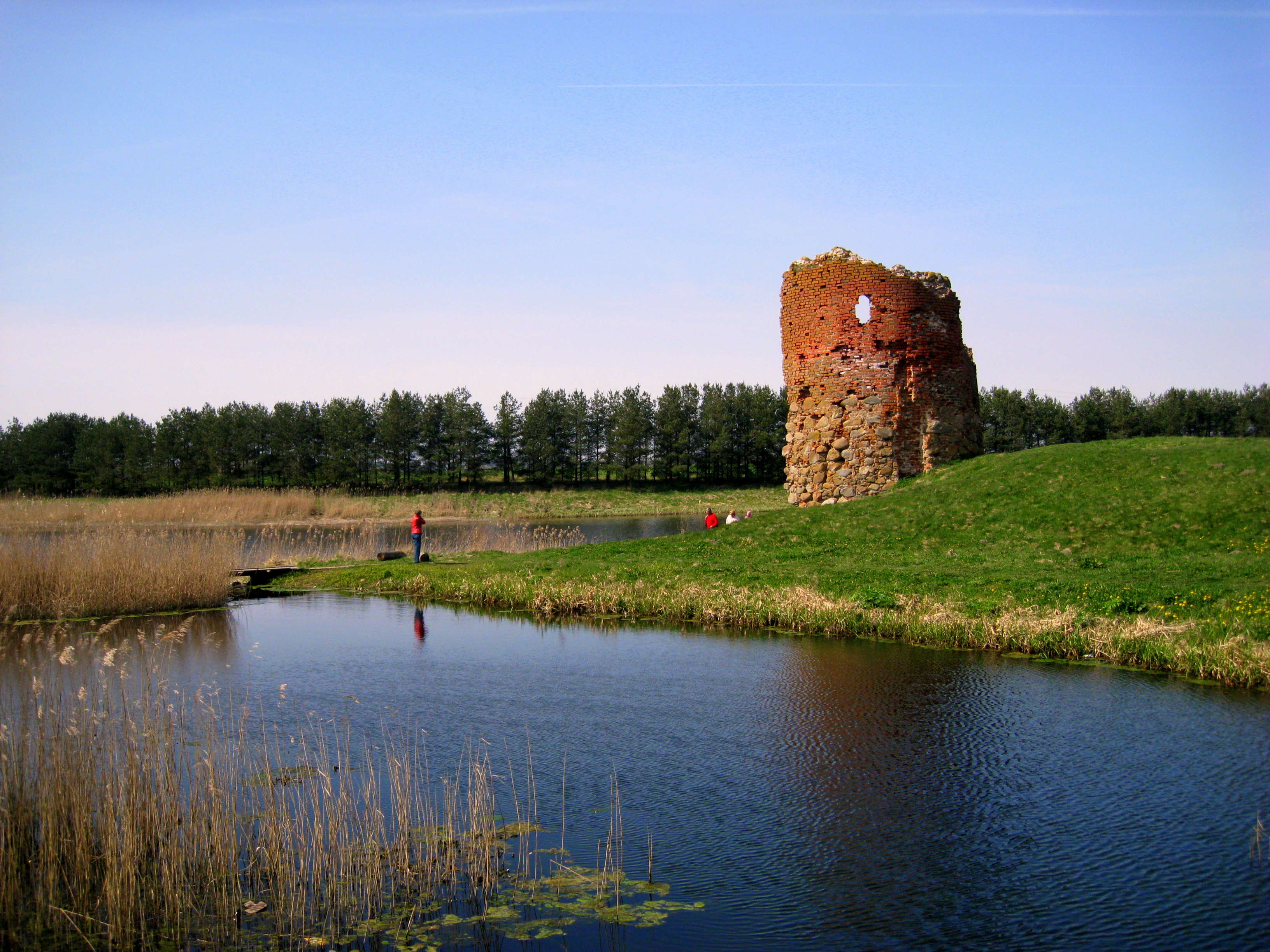|
Castles In Latvia
This is the List of castles in Latvia, which includes fortified residences of Western European conquerors built in the area of present-day Latvia before the 17th century. There are about 140 medieval castles in the area, therefore this list is not complete. After the name of the castle comes the year of construction and a short description of its present-day condition. Table of contents Courland Zemgale Vidzeme Latgale See also *List of castles *List of castles in Estonia *List of palaces and manor houses in Estonia *List of palaces and manor houses in Latvia * List of hillforts in Latvia *List of castles in Lithuania Additional information References Sources * * External links Ambermarks - Medieval castles of Latvia - list {{List of castles in Europe * Latvia Cas Lists of castles by country Castles A castle is a type of fortified structure built during the Middle Ages predominantly by the nobility or royalty and by military orders. Scholars debate the ... [...More Info...] [...Related Items...] OR: [Wikipedia] [Google] [Baidu] |
Latvia
Latvia ( or ; lv, Latvija ; ltg, Latveja; liv, Leţmō), officially the Republic of Latvia ( lv, Latvijas Republika, links=no, ltg, Latvejas Republika, links=no, liv, Leţmō Vabāmō, links=no), is a country in the Baltic region of Northern Europe. It is one of the Baltic states; and is bordered by Estonia to the north, Lithuania to the south, Russia to the east, Belarus to the southeast, and shares a maritime border with Sweden to the west. Latvia covers an area of , with a population of 1.9 million. The country has a temperate seasonal climate. Its capital and largest city is Riga. Latvians belong to the ethno-linguistic group of the Balts; and speak Latvian, one of the only two surviving Baltic languages. Russians are the most prominent minority in the country, at almost a quarter of the population. After centuries of Teutonic, Swedish, Polish-Lithuanian and Russian rule, which was mainly executed by the local Baltic German aristocracy, the independent R ... [...More Info...] [...Related Items...] OR: [Wikipedia] [Google] [Baidu] |
Bauska Castle
Bauska Castle (; german: Schloss Bauske) is a complex consisting of the ruins of an earlier castle and a later palace on the outskirts of the Latvian city of Bauska. While originally a hill fort, the Livonian branch of the Teutonic Knights built the castle in the fifteenth century, the palace was added in the sixteenth century, and restoration began in the nineteenth century. History The castle stands on the narrow peninsula at the confluence of the rivers Mūša and Mēmele where they form the Lielupe river. In ancient times, the hill was the site of a Semigallian fortress. The first stone buildings were established between 1443 and 1450 by the Livonian branch of the Teutonic Knights and construction continued till the end of the 16th century. The old section of the castle featured a great watch tower, 3.5 meter thick walls, a prison under the tower, a garrison and a drawbridge at the gates. Construction started under the rule of the Master of the Livonian Order, Heid ... [...More Info...] [...Related Items...] OR: [Wikipedia] [Google] [Baidu] |
Bauskas Pils 2015
Bauska () is a town in Bauska Municipality, in the Zemgale region of southern Latvia. Bauska is located from the Latvian capital Riga, 62 km (38.5 mi) from Jelgava and from the Lithuanian border on the busy European route E67. The town is situated at the confluence of the shallow rivers Mūsa and Mēmele where they form the Lielupe River. Average temperatures in January are , and in July. Rainfall averages annually. The 80.4% of Bauska Municipality territory is agricultural land and 13% of forests. In previous centuries, the city was known in German as ''Bauske'', in Yiddish as ''Boisk'' and in Lithuanian as ''Bauskė''. The population of Bauska is estimated to be 8,200. Bauska is the centre of Bauska Municipality, a first-level national subdivision that has a population of 24,370 with an approximate density of 30 people per km2. History By the early 13th century this territory was inhabited by Semigallian tribes. In the mid-15th century, Bauska castle ... [...More Info...] [...Related Items...] OR: [Wikipedia] [Google] [Baidu] |
Ventspils
Ventspils (; german: Windau, ; see other names) is a state city in northwestern Latvia in the historical Courland region of Latvia, and is the sixth largest city in the country. At the beginning of 2020, Ventspils had a population of 33,906. It is situated on the Venta River and the Baltic Sea, and has an ice-free port. The city's name literally means "castle on the Venta", referring to the Livonian Order's castle built alongside the Venta River. Other names Ventspils was historically known as ''Windau'' in German. A Russian name from the time of the Russian Empire was ''Виндава (Vindava)'' or ''Виндау (Vindau)'' although ''Вентспилс (Ventspils)'' has been used since World War II. Some other names for the city include liv, Vǟnta and pl, Windawa. History Ventspils developed around the Livonian Order Ventspils Castle, built along the Venta River. It was chartered in 1314 and became an important mercantile city of the Hanseatic League. As part of the ... [...More Info...] [...Related Items...] OR: [Wikipedia] [Google] [Baidu] |
Ventspils Castle
Ventspils Castle (german: Windau) is located in Ventspils, Latvia. It is one of the oldest and most well-preserved Livonian Order castles remaining, in that it has retained its original layout since the 13th century. Through its 700-year history, it has been used as a fortress, residence, garrison, school, military base, and prison. In 1995, the castle was restored to its 19th-century appearance, and was converted into a museum. History Ventspils castle was built in the second half of the 13th century, and controlled by the Livonian Order until the mid-16th century. As a part of the Duchy of Courland, the castle was the residence of the city master, but during the Polish-Swedish War it was destroyed. After reconstruction in 1650, the chapel became a Lutheran church (1706–1835) and later a Russian Orthodox church (1845–1901), but the rest of the castle remained largely unused. In 1832 the 3rd floor was converted into a prison, which closed in 1959. After World War II, th ... [...More Info...] [...Related Items...] OR: [Wikipedia] [Google] [Baidu] |
Ventspils Municipality
Ventspils Municipality ( lv, Ventspils novads) is a municipality in Courland, Latvia. The municipality was formed in 2009 by merging Piltene town, Ance Parish, Jūrkalne Parish, Piltene rural community (from 2010 Piltene Parish), Pope Parish, Puze Parish, Tārgale Parish, Ugāle Parish, Usma Parish, Užava Parish, Vārve Parish, Ziras Parish and Zlēkas Parish. It is administered from Ventspils city, which is not included within its limits. The population in 2020 was 10,824. See also * Administrative divisions of Latvia (2009) The current administrative division of Latvia came into force on 1 July 2021. On 10 June 2020, the Saeima approved a municipal reform that would reduce the 110 municipalities and nine republic cities to 43 local government units consisting of 36 ... References Municipalities of Latvia {{Courland-geo-stub ... [...More Info...] [...Related Items...] OR: [Wikipedia] [Google] [Baidu] |
Piltene
Piltene (; pl, Piltyń, german: Pilten) is a town in northwestern Latvia. The population in 2020 was 909. The ruins of Piltene Castle are located in Piltene. Population Population (Year): 40,000 (1795) History *1220: King Valdemar II of Denmark erects a castle on the site. *September 1234: Bishopric of Courland (Bistum Kurland) established (formally declared on 11 February 1232), consisting of three separate enclaves after numerous distributions of the Couronian lands among the Bishops of Courland, and of Riga, and the Teutonic Order. :''Note'': the bishops were also rulers of the island of Runö (now Ruhnu in southwest Estonia) from at least 1341. *1290: The cathedral chapter is incorporated into the Teutonic Order lands, the bishopric is subjected to the Order. *1520: Made a sovereign principality (prince-bishopric) of the Holy Roman Empire (formally from January 1521), but style of prince not used. *20 May 1560: Sold to the King of Denmark, given as an appanage (Stift Kur ... [...More Info...] [...Related Items...] OR: [Wikipedia] [Google] [Baidu] |
Piltene Castle
Piltene Castle is a Bishopric of Courland castle in the town of Piltene in the historical region of Courland, in western Latvia. Until the 16th century it served as a capital of Bishopric of Courland. History As part of the Northern crusades, the region was awarded the Livonian Brothers of the Sword in 1230 in the first Treaty with Curonian King. Between 1242 and 1247, the region was again subjugated by the Teutonic Order into which the Order of the Sword Brothers had merged after the defeat at the Battle of Saule. The eternal peace was established only in 1267, when master of the order Otto von Lutterberg pacified the region and concluded treaty with the Curonians. At the division of Courland the Order received the area on the left bank of Venta (Windau) river and the diocese of Courland the area on the left bank with Pilten. Bishop Edmund von Werd (1263 to 1299) resided in Memel castle, while Amboten castle served him as a residence in northern Kurland. Castle Amboten ... [...More Info...] [...Related Items...] OR: [Wikipedia] [Google] [Baidu] |
Piltene Castle Ruins
Piltene (; pl, Piltyń, german: Pilten) is a town in northwestern Latvia. The population in 2020 was 909. The ruins of Piltene Castle are located in Piltene. Population Population (Year): 40,000 (1795) History *1220: King Valdemar II of Denmark erects a castle on the site. *September 1234: Bishopric of Courland (Bistum Kurland) established (formally declared on 11 February 1232), consisting of three separate enclaves after numerous distributions of the Couronian lands among the Bishops of Courland, and of Riga, and the Teutonic Order. :''Note'': the bishops were also rulers of the island of Runö (now Ruhnu in southwest Estonia) from at least 1341. *1290: The cathedral chapter is incorporated into the Teutonic Order lands, the bishopric is subjected to the Order. *1520: Made a sovereign principality (prince-bishopric) of the Holy Roman Empire (formally from January 1521), but style of prince not used. *20 May 1560: Sold to the King of Denmark, given as an appanage (Stift Ku ... [...More Info...] [...Related Items...] OR: [Wikipedia] [Google] [Baidu] |
Nurmuiža Castle
Nurmuiža Castle is a castle in Lauciene Parish, in the historical region of Courland, in western Latvia. Today's use Since 2004 the castle has been managed by "Nurmuižas pils" Ltd. and is again in private ownership. See also *List of castles in Latvia This is the List of castles in Latvia, which includes fortified residences of Western European conquerors built in the area of present-day Latvia before the 17th century. There are about 140 medieval castles in the area, therefore this list is not ... References External links Castles in Latvia Talsi Municipality {{Latvia-castle-stub ... [...More Info...] [...Related Items...] OR: [Wikipedia] [Google] [Baidu] |





